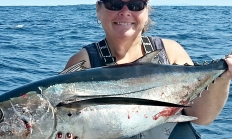
Search myodfw.com
A box calls is the most popular turkey call, and is a good choice for new turkey hunters. Box calls not only are easy to use, but they can sound very realistic. A box call can create a wide range of yelps, clucks, purrs, fighting purrs, cackles and gobbles. If you can get yelps, clucks and purrs to sound good on a box call, you’ll routinely bring in birds. Parts of a box call Box calls come in two parts – a narrow rectangular box with a paddle attached at one end. Attached with a single screw in the center

Pot calls, often called slate calls, are friction-style calls that are easy to use and produce a range of turkey sounds. Parts of a pot call A pot call consists of three parts: a pot, a calling surface and a striker. The pot holds the slate and acts as a sound chamber. There are holes drilled in the bottom for sound to escape. To keep from covering the holes, hold the pot with the tips of your fingers, keeping it away from the palm of your hand. Pot calls can be made to be all-weather, with the right striker. The

Mouth calls, also known as diaphragm calls, can seem intimidating but they have some advantages over other kinds of calls. Mouth calls are popular with Oregon turkey hunters because: They're easier to keep dry during wet, spring seasons than are box or slate calls. Since the the call is in your mouth, you can call in a turkey without moving and possible spooking the bird. With practice, they can produce very realistic turkey sounds. Parts of a mouth call There are four parts to a mouth call. Starting at the outside of the call there’s: The tape. The tape stops

Turkey hunters using a shotgun face a very small target – the head and neck of a turkey. Combine that with today’s specialized turkey loads shooting very tight patterns, and making a clean kill shot might depend on a steady shooting rest. Turkeys are nervous-looking birds that seem to never stop moving. Because of their monocular vision and eyes set on the side of their skull, turkeys are often moving and bobbing their heads to try to decipher what they’re seeing. Consider a shooting rest If you’ve got your gun in a ready position, and are waiting for a turkey

Whether you ’re turkey hunting with a bow or shotgun, you’ll need to know when to take the shot. If you’re using a shotgun, the best shot will be at the head, preferably when it’s outstretched away from the bird’s body. Bowhunters will want to know something about turkey anatomy so they’ll recognize when they have a clear kill shot to a vital organ. Make sure it’s safe to shoot In addition to having a good shot at a bird, you’ll want to make sure there are no other hunters, livestock or other turkeys nearby that you could hit by

After the shot, don ’t take your eyes off the turkey. Quickly and safely get to the downed bird to make sure it’s dead, or to take a second shot if it’s not. Turkeys are high-strung birds that can move quickly. A lot can happen between when you take a shot and when your bullet or arrow hits the bird that can lead to a wounded bird. You’ll want to be ready to take a second before the bird can run or fly away. Follow up for shotgun hunters When turkey hunting with a shotgun, keep the gun in a










Sauvie Island Wildlife Area was established in 1947 with primary objectives of protecting and improving waterfowl habitat and providing a public hunting area. The initial purchase of five acres in 1940 and subsequent purchases through 2012 has brought the wildlife area to its present size of 11,643 acres, of which 8,153 acres are under fee title to the department and 3,490 acres are managed through a cooperative agreement with the Oregon Department of State Lands. Currently, the wildlife area supports a biologically diverse association of wildlife which includes at least 275 species of birds, 37 species of mammals, 12 species
Piloted in 2014, the Tag Team program helps ODFW fish biologists better evaluate resident gamefish, bass, and stocked rainbow trout fisheries. It's also a chance for anglers to participate in fishery management and, perhaps, come away with up to $50.


